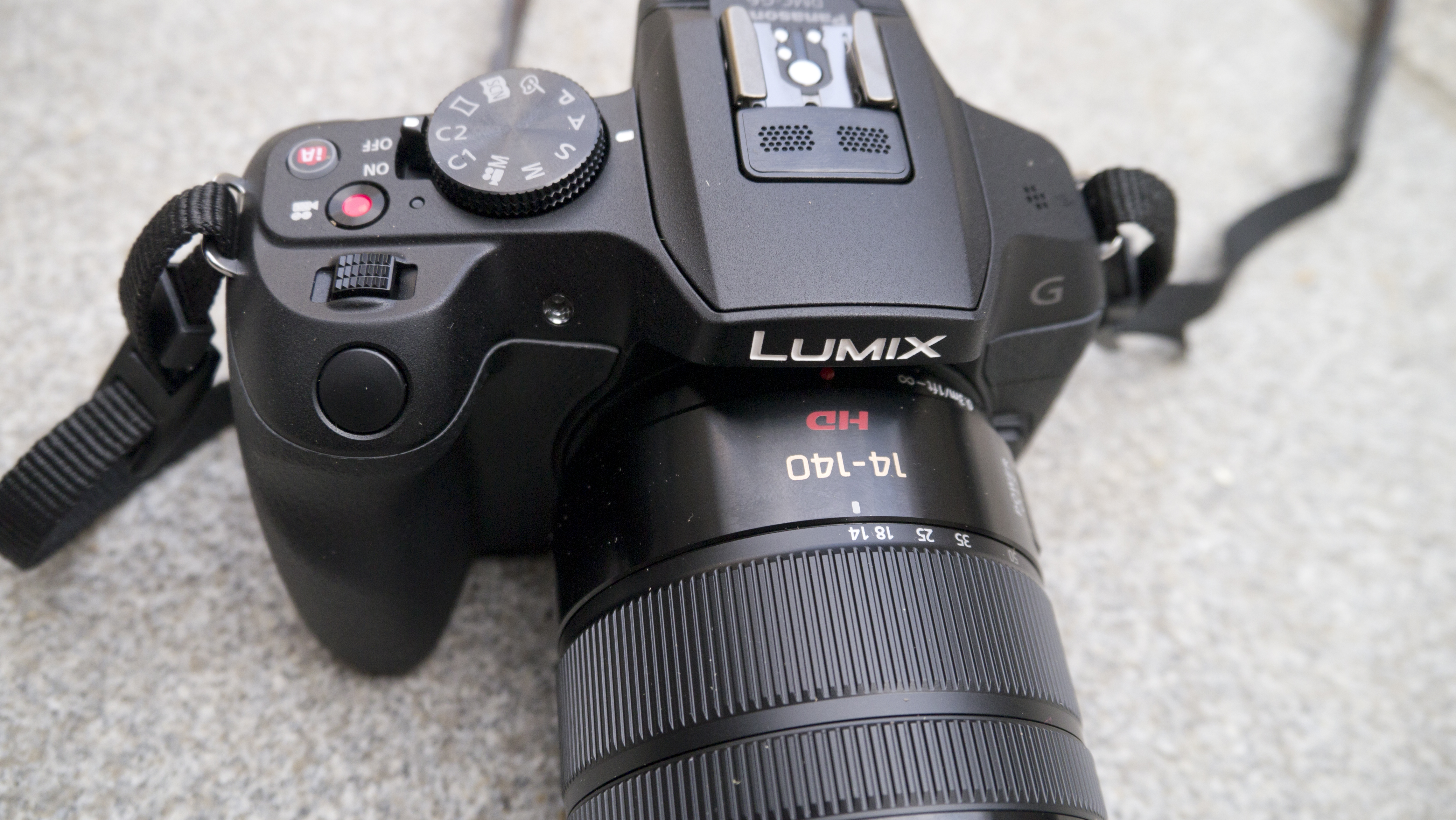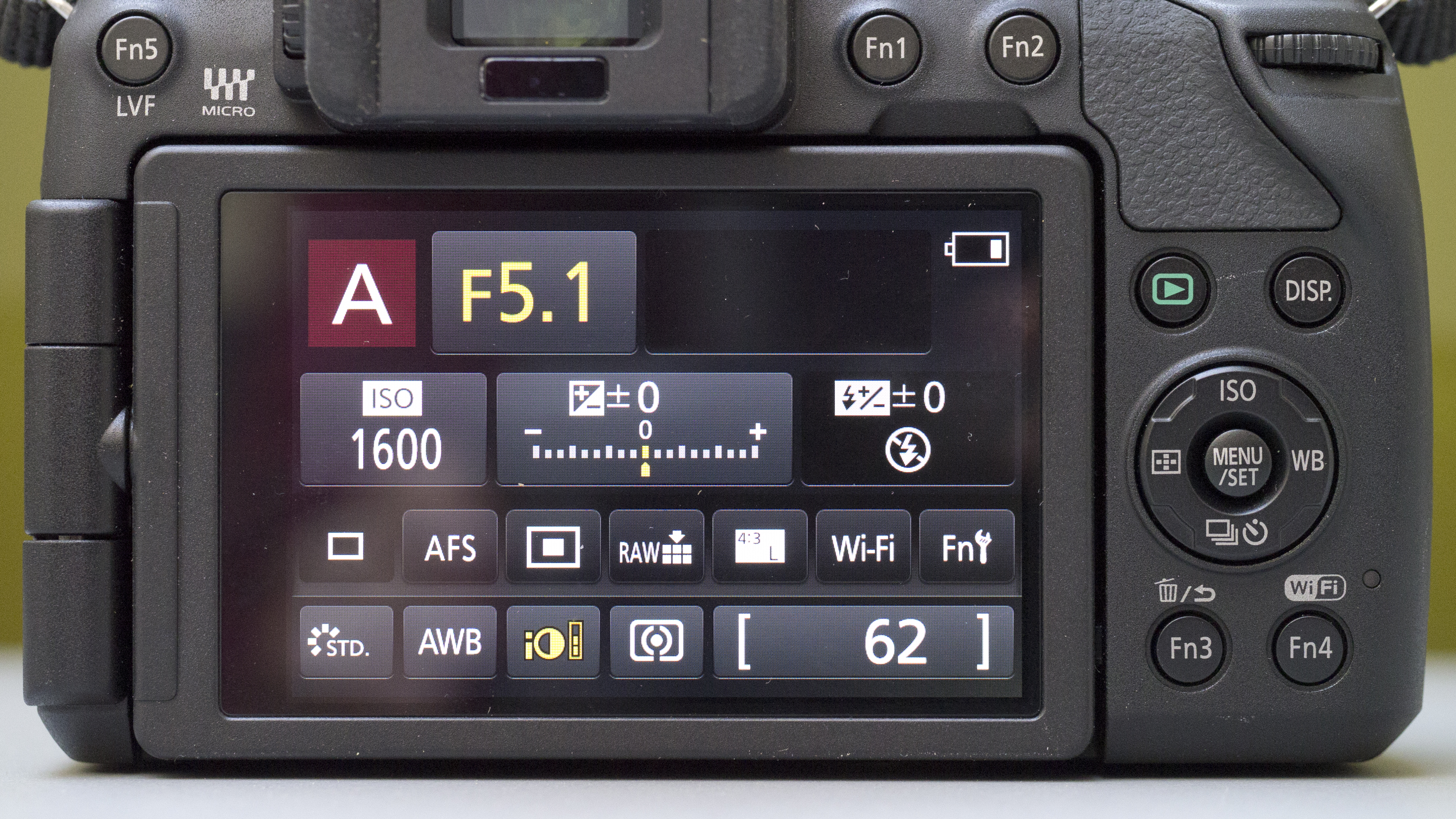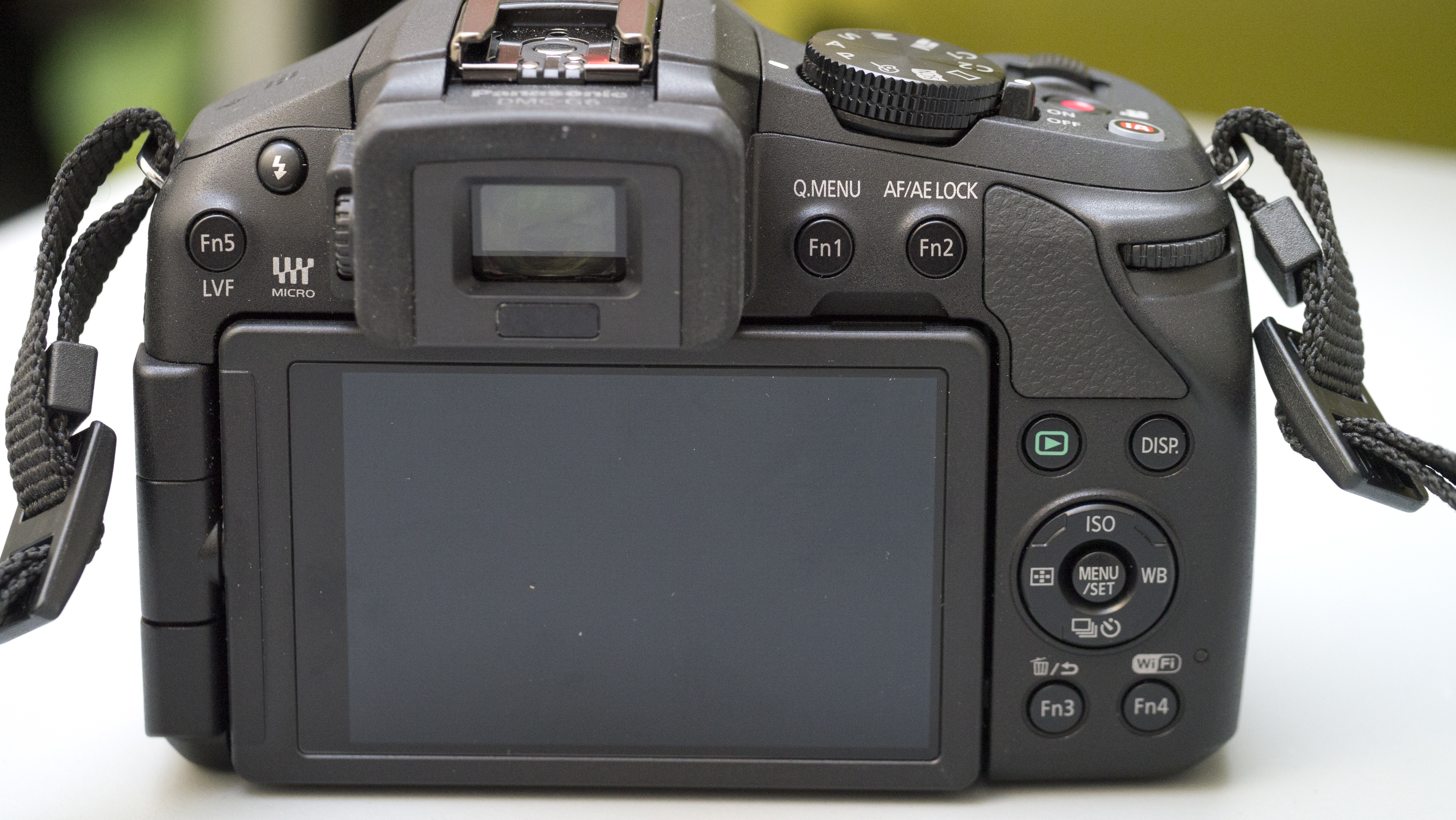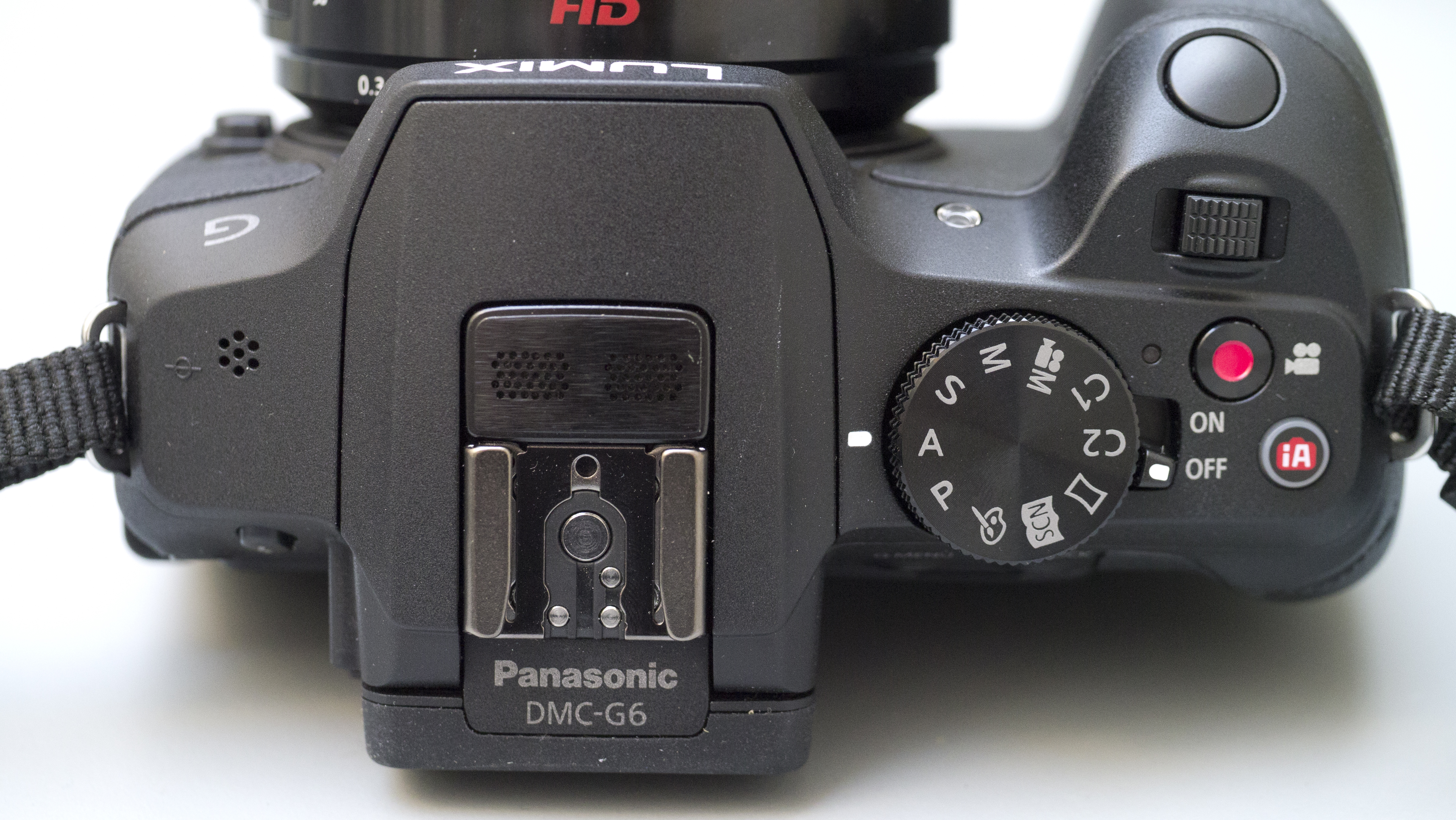Why you can trust TechRadar
Panasonic has made a few subtle but pleasing changes to the appearance of the G5 for this new G6. For a start the camera looks and feels a little more serious than the Panasonic G5. The viewfinder bump is less pronounced and the texture of the body surface has changed.
The silver controls on the back of the Panasonic G5 are now black on the Panasonic G6, giving it a higher quality appearance.
There are also a couple of additional function buttons, bringing the total number of physical function buttons on the back of the camera to five. These enable greater customisation of the Panasonic G6, making it quicker and easier to use once you've set it to your preferences.

The physical buttons all have their default settings indicated next to them, and in the most part they work well. However, we found it useful to use Fn3, which is the delete button in review mode, to access the flash exposure compensation control in record mode
It's very easy to change the purpose of the Fn button, because once the option is selected in the Menu the screen displays an image of the camera with the buttons and their function highlighted. Touching any of the icons reveals the customisation options available.

Most of the options that you need to access regularly can be reached via physical buttons or the Quick menu, so you don't need to delve into the full menu very often once the camera is set up.
One issue we had with the G6's control arrangement was that we occasionally changed the on-screen display by accidentally pressing the Display button just beneath the thumb-rest.
Sign up for breaking news, reviews, opinion, top tech deals, and more.
As on the top of the Panasonic G5, there's a Function Lever on the top-plate of the Panasonic G6, just behind the shutter release button. When one of Panasonic's powerzoom lenses is mounted, this can be used to change focal length. It can also be used to adjust the exposure compensation.
If you regularly switch between powerzoom and non-powerzoom lenses you may find it best to set this lever to adjust the exposure compensation, to avoid its function from changing depending on the lens that's mounted.

While we found the Function Lever provides a very quick way of adjusting exposure, it seems to confuse inexperienced photographers because it's more prominent than the shutter release button. If you ever hand the camera to a non-photographer to take a shot, the first thing they do is move the lever backwards and forwards, adjusting the exposure as they go.
In addition, the Panasonic G6's electronic viewfinder (EVF) has been changed to an OLED unit that is brighter than an LCD finder. Although the type of device has changed, its resolution is the same (1,440,000 dots) as the Panasonic G5's EVF.
While its faint grid-texture and a contrast shift means you are aware that you are using an electronic viewfinder rather than an optical one, the EVF provides a very clear view, with lots of sharp detail and natural colours. It also has the benefit of showing how the image will appear when it is captured, taking into account any changes in exposure and white balance.

Another key upgrade made for the Panasonic G6 is the switch to a 3-inch electrostatic touchscreen, which is much more sensitive than the resistive touchscreen on the Panasonic G5. This makes making settings selections and adjustments quicker than before, putting the Panasonic G6's screen's response on a par with that of the Panasonic GH3.
It's especially useful when using Touchpad AF, which enables the AF point to be selected by touching the screen while composing images in the EVF. It's a significant improvement on the Panasonic G5.
We found the main LCD screen also provides a clear view even in quite bright light, and because it is mounted on an articulating hinge it makes shooting from awkward angles much easier than normal. Touch Shutter mode, which triggers the camera to focus on the point selected by a touch on the screen and then fire the shutter, is especially useful when shooting from a very low or high angle.

At times, however, it would be helpful if the on-screen digital level could be made a bit clearer, because its not always easy to see it change from yellow to green to indicate the camera is level when the screen is being viewed from an angle.
The navigation controls on the back of the Panasonic G6 sit low into the camera body, which initially makes them a little hard to identify with your thumb when holding the camera to your eye. However, after a little experience they become easier to locate.
Panasonic has introduced a new app that enables G6 users to control the camera remotely via your iPhone, iPad or Android device. It enables a similar level of control to the Lumix Link app that works with the Panasonic GH3 with the focus point, exposure and white balance all being remotely controllable.

The Panasonic G6 has Wi-Fi connectivity and an NFC chip built-in. The NFC chip enables quick connection with NFC-enabled smartphones and tablets. As yet Apple hasn't included an NFC chip in any of its devices, but you can still connect to the Panasonic G6 wirelessly.
Panasonic's Image App is particularly useful for anyone who wants to be able to shoot while they are away from their camera, with a Live View image being displayed on the phone or tablet screen.
Unlike some other apps, Image App gives the photographer remote control over the exposure, white balance and drive mode settings and the focus point can be set with the touch of a finger on the tablet or phone screen.

Images can also be transferred wirelessly to the smart device at full or reduced resolution, and from here they can be shared. Once you've set up a Lumix Club account and registered the destination Facebook, Twitter or other social media or image sharing account it's also possible to post images directly to these sites.
While the Wi-Fi connectivity is a bonus, it isn't especially intuitive to set up and use the first time, even when connecting with an NFC device. Panasonic's Lumix Club website also isn't especially inviting or user-friendly.
